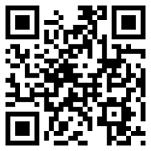QR codes: function not fashion

Mark Evans
Langland
QR (Quick Response) codes are the current must-have fashion item for your ad campaign. They certainly provide some interesting opportunities, but as with all new technology it's important to ensure you use them only when appropriate to the target audience, rather than taking a one-size-fits-all approach.
According to a survey of 794 online respondents by Simpson Carpenter, just 36% of consumers know what QR codes are for, while only 11% have actually used them. For a confirmed geek like me, this isn't quite as high as I anticipated. But this shortfall has a rational explanation ¬– none of the two main smartphones currently come with a QR reader App pre-installed.
"...just 36% of consumers know what QR codes are for, while only 11% have actually used them..."
Now just because something is still niche it doesn’t mean we shouldn’t try it, when technology makes life easier or adds value to our communications it shouldn't be ignored. But don't rush into QR without first asking yourself if including it makes interaction quicker, easier, or more fun for the user. If you can't say yes to any of these questions, seriously consider if you really need QR at all.
Figure 1: Quick Response (QR) code1
So you've weighed up the pros and cons and you’d still like to use a QR code. Good. Just follow the few rules below and you’ll make sure you're not only putting your QR users first, but you're also allowing the other 89% of your audience to still see your content.
Offer more value than your homepage
Link to something specific. Help your customer to write an SMS or even better, use a QR code to connect your website with their smartphone as with the new Clik App.
Include a link for everyone else
The easiest way to counter the fact that 89% may not use your QR code is to also include a short link to your website.
"If you can't say yes to any of these questions, seriously consider if you really need QR at all."
Ensure you have a mobile website
It’s amazing how often you will see a QR code that opens a website not designed for mobile. If you are going to make someone jump through hoops to view your website on their phone, as a bare minimum they should be able to easily view the content.
Never use a code where there is no data signal
Go on the London Underground and you are guaranteed to see a QR code that can’t be used in that non-3G environment.
Don’t be afraid to explain how it works
If around 64% of your audience don’t even know what a QR code is, how can you expect them to use it? It pays to explain how to actually use one (assuming they will be getting more than just a link to your homepage).
"If you are going to make someone jump through hoops to view your website on their phone, as a bare minimum they should be able to easily view the content."
Test and learn
As with all digital advertising QR codes can easily be measured. To do this make sure they go through to a unique URL which can be tracked and add a different short URL underneath so you can compare and asses how relevant they are to your audience.
I hope this has been of some use, I would love to hear from you if you have good case studies about QR codes, or if you have any more hints and tips.
References:
1. Two thirds of consumers don't know what QR codes are: survey http://econsultancy.com/uk/blog/7959-two-thirds-of-consumers-don-t-know-what-qr-codes-are-survey
About the author:
Mark Evans is Digital Account Director at Langland. Previously working for ‘Dare’ Campaign’s digital agency of the decade and award winning digital production agency Pirata London.
Mark's portfolio contains award-winning digital projects for brands such as McLaren F1, Sony, Cadburys (Spots vs Stripes), Pepsi, Toyota, Pizza Express and Robinsons (Put on a Panto.)
Mark can be found Tweeting at @luckytenseven and contacted by email on mark.evans@langland.co.uk.
Do you have any good QR code case studies?













